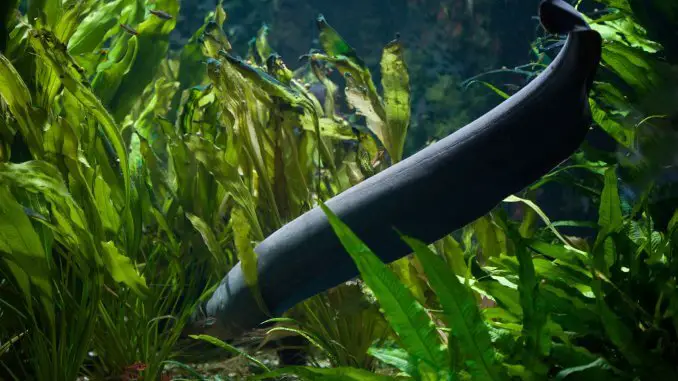
Within home aquariums more often than not you will find that people tend to keep more popular species.
However, there are also some lesser-known species that are fascinating – welcome to Freshwater Eels.
There are numerous different species to choose from when it comes to keeping and caring for freshwater Eels, even some that are not in fact true Eels.
Within this article, we describe the most popular varieties, how to care for them, and much more…
Overview
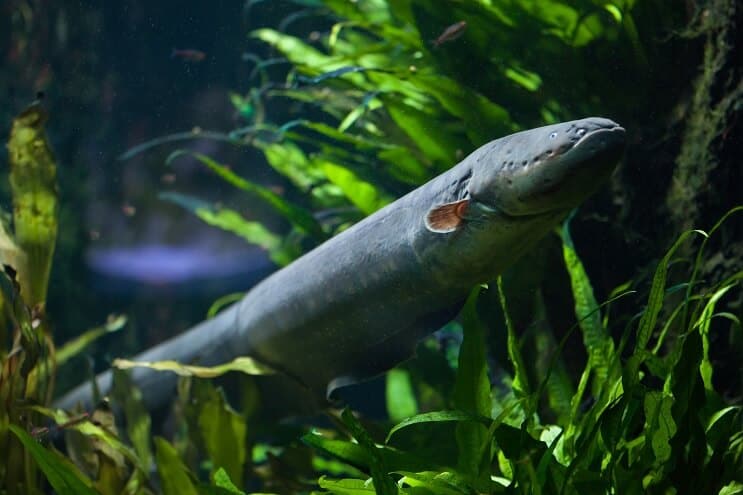
All Eels belong to the order Anguilliformes which is made up of 20 different families. Within these families, there are over 800 freshwater and marine species.
Freshwater Eels are found throughout the world in tropical, subtropical, and temperate climates.
Some species live in freshwater throughout their lives and return to the oceans to breed, like the European Eel (Anguilla anguilla). There are also marine Eels which for some months breed in freshwater rivers.
Different species have different lifespans however you can expect most to live between 8-18 years.
The average cost of these freshwater creatures will depend on the species. Fire Eels generally cost around $12-20, whereas others like Tire Track Eels will cost $16-20 and Electric Eels $300.
Typical Behavior
Within an aquarium, Eels can be found mostly inhabiting the lower regions of the tank.
They can be quite shy creatures with species like Zig-Zag, Tire Track and Fire Eels choosing to spend most of the day buried beneath the substrate with just their heads sticking out or in amongst the plants.
As time goes on, your new tank inhabitant will slowly grow to recognize you and will eventually become accustomed to your feeding regime and may come out to greet you during this period.
They are relatively peaceful creatures when they are kept in a species-only tank or in a community tank with larger fish.
However, when kept with smaller fish you might notice that some of these may go missing as this species begin to predate on them. This is why they should only be kept with species that are too large for them to swallow.
Types of Freshwater Eel
Tire Track Eel
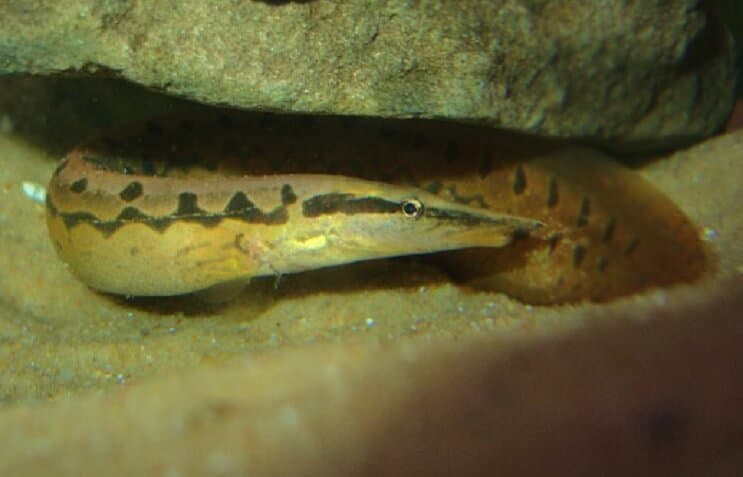
This species (Mastacembelus favus) gets its name from the peculiar dark markings across the back and sides of its sandy-colored body. It can grow to a size of 28 inches in a home aquarium, so a large tank is a must.
Zig Zag Eel
They are similar in appearance to the Tire Track and are often mistaken for them.
The main difference is the location of the body patterns, the Zig Zag patterns are restricted to the upper two-thirds of the body. This species (Mastacembelus armatus) also grows to a whopping 35 inches in length and can live up to 18 years.
Peacock Eel
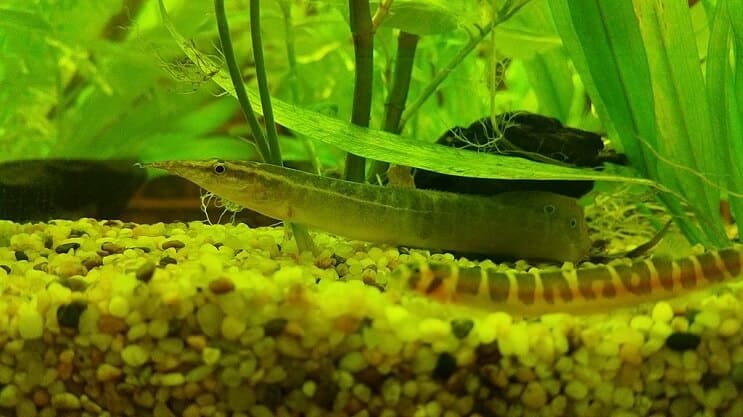
This species (Macrognathus siamensis) has a light greenish-brown coloured body with a yellow stripe that runs along the body.
They are small aquarium species that generally grow to a size of around 11 inches.
A 35-gallon aquarium will be sufficient.
Black Spotted Eel
Just like the two previous species, the Black Spotted Eel comes from the Mastacembelidae family. This is the Spiny Eels family which is not true Eels.
All three species are mistaken for one another as juveniles, but as adults, the Black Spotted species develops black spots instead of a reticulated pattern across its body. This species (Mastacembelus dayi) grows to 20 inches and can live to 18 years old.
Freshwater Snowflake Eel
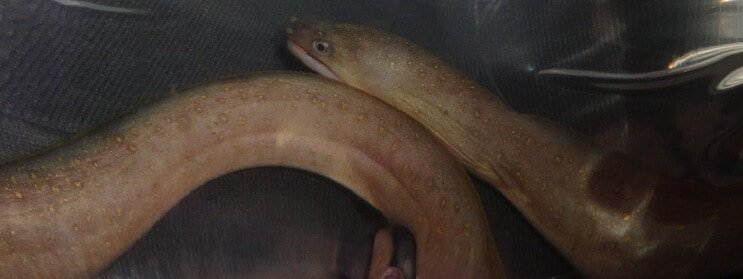
Contrary to its name, this is not actually a freshwater species but a brackish one. The reason it’s on this list is that it returns to freshwater rivers to breed and spawn.
This species (Gymnothorax tile) is a true Moray Eel that can only survive in freshwater for a few months at a time. Keeping them in freshwater for long periods of time will shorten their lifespan. They grow to 23 inches and should be kept in at least a 35-gallon tank.
Electric Eel
These fish are not for the faint of heart as they can produce at least 500 volts of electricity.
There have been cases of this species incapacitating humans long enough to cause death by drowning.
Electrophorus electricus have a plain dark grey color over their entire body. They grow up to 8 feet in length, so they need at least a 200-gallon tank.
Freshwater Dragon Eel
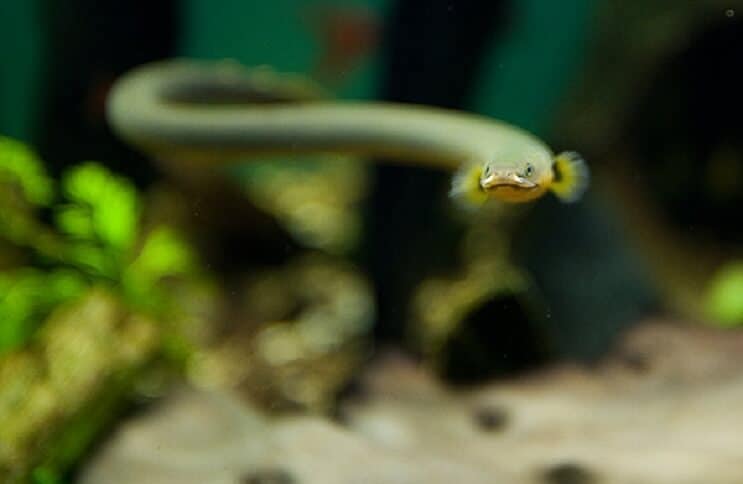
The name Freshwater Dragon Eel can refer to 2 different species, both of which are not true Eels.
These are the Violet Goby (Gobioides broussoneti) and the Reedfish (Erpetoichthys calabaricus) – both go by this name due to their Eel-like appearance.
Both species grow to a maximum size of 15 inches in captivity and need a tank of at least 30 gallons. They also have a lifespan of around 10 years so make sure you can commit to this before getting them.
Freshwater Aquarium Eel Care Guide
Habitat and Tank Conditions
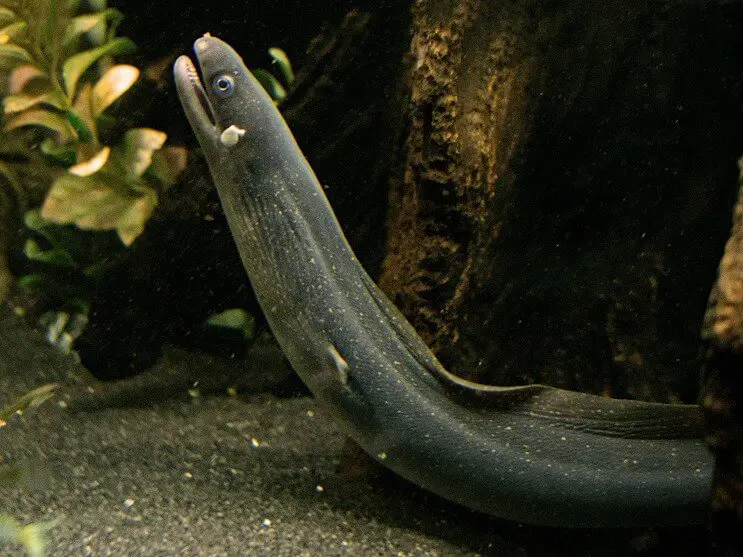
These fish are found all throughout the world in different habitats, both tropical and temperate climates. Because there are a lot of different species, they each have their own specific habitat requirements.
A popular aquarium species is the Tire Track species which is native to Southeast Asia. They are found inhabiting rivers, marshlands, rice paddies, and swamps in countries like Thailand, Myanmar, and India.
Water temperatures in these regions can regularly reach 82°F during the summer months but can drop to around 72°F during the cooler periods. Species found in different parts of the world could have lower or higher temperature waters so it’s vital you do your research.
Waters where the Tire Track Eels are found can vary in pH from 6.5-7.8 but once again these will vary between different species. For example, Zig Zag Eels are native to Pakistan, Indonesia, and Vietnam where water temperatures range between 72-82°F with a pH of 6.5-7.5.
Their environments have lots of vegetation, with underwater root systems as well as rocky overhangs and outcrops.
There will be minimal water flow in these areas due to them being heavily planted.
They will typically receive between 12-14 hours of daylight in these regions as they are close to the equator.
Tank Setup
Within an aquarium, their natural habitat conditions and water parameters should be closely mimicked to provide a natural feel.
To do this, provide a substrate made up of coarse sand with lots of pebbles and rocky outcrops.
Heavily plant the aquarium with species like Java Fern, American Eelgrass, and plenty of oxygenating plants such as anacharis.
LED lighting in the range of 6500 Kelvin should be on for around 10-12 hours each day.
If you are keeping Freshwater Snowflake Eels, we recommend that you purchase an aquascaping toolset that will contain long tweezers which can be used for feeding and long scissors for plant trimming to prevent being bitten as they have razor-sharp teeth.
What Size Aquarium Do They Need?
We would not recommend keeping any freshwater Eels in an aquarium less than 30 gallons.
Larger species will require more room and it is essential that you do your research and have the correct tank size.
For Eels that grow to around 15 inches a good rule of thumb would be one per 10 gallons of water. Larger species of 25 inches should be kept one per 20 gallons.
Caring for Eels
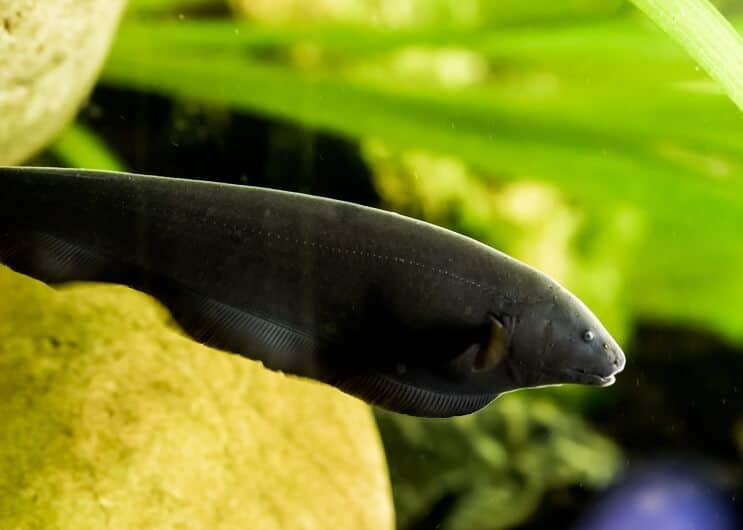
Freshwater Eels are even more likely to be affected by diseases when housed in the water of poor quality.
There are a whole host of bacterial, fungal, and parasitic infections.
They are susceptible to fungal infections like gill rot and branchio-nephritis as well as parasitic diseases like white spots and other diseases like cauliflower disease where tumors appear on the upper and lower jaw.
The best way to ensure that they do not become infected is to keep them in a healthy water system.
For each individual species, they will have different water parameters such as temperature and pH which is why it is vital you first do your research before getting them.
Regular checks on your water parameters with a test kit is essential and you should look to keep a dissolved oxygen level greater than 5mg/L (>~0.02g/gallon), and Ammonia level of less than 0.05-0.1mg/L (<~0.0002-0.004g/gallon) and a Nitrite level of less than 30mg/L (<~0.11g/gallon).
Using live plants (like Java Moss) will help to boost the oxygen levels within your aquarium whilst also helping to reduce the nitrate levels in the tank as well.
The most essential piece of equipment in any aquarium is the filter as it not only removes debris (mechanical filtration), but it also provides a place for bacteria that are beneficial to the nitrogen cycle to grow (biological filtration).
Regular maintenance in the form of bi-weekly water changes of around 30% as well as gravel vacuums will be essential due to the amount of waste they produce. Failure to do this will result in spikes of ammonia and nitrites which can lead to diseases, infections, and death.
What To Feed Eels
As with all species, they are carnivorous and in the wild and eat small crustaceans like shrimp and crabs as well as any fish which are small enough to swallow. They would also predate on amphibious species like frogs.
Their diet within the aquarium can be sustained by feeding frozen or live shrimp species like Ghost Shrimp. Live feeder fish also offer a great source of protein for your Eel. Ghost Shrimp,
Algae Shrimp and Thai Micro Crabs are the perfect crustaceans to feed them.
Sinking pellets which are specifically designed for carnivorous Eels should also be offered to them at least once a day with other meaty foods.
Tinned fish like sardines are another good food source although they will need thorough cleaning if they have been packaged with possible contaminants like vegetable oil. Fresh fish is the preferred choice.
Frozen or fresh Bloodworms, Blackworms, and Earthworms are also a good choice. Try to mix up their diet by feeding different foods throughout the week.
You should feed them twice a day (once in the morning and once during the early evening).
Summary
There are lots of species to consider.
They can come from different parts of the world and different climates meaning there are tropical, subtropical, and even temperate species.
You should know they are mostly peaceful when they are kept with other larger fish. Black Ghost Knifefish make a popular tank mate choice.
These freshwater species would make a great addition to the tanks of both beginner and expert fishkeepers alike, providing you do your research beforehand and that you have the time to provide them with the correct care.
What is your favorite species of Eel? Let us know in the comments section below…

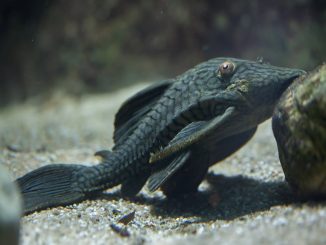
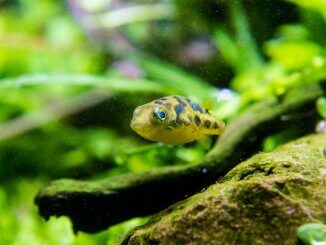

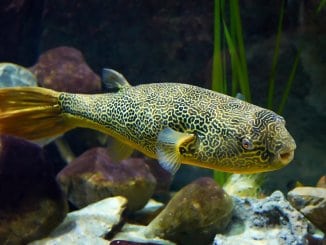
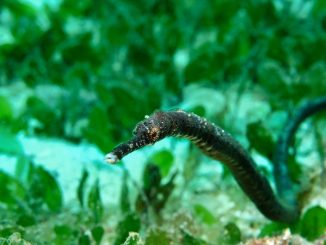
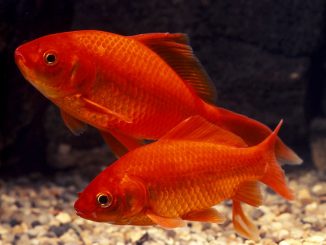
Be the first to comment